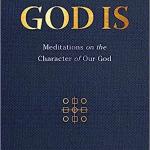The Universal Story: Genesis 1-11 (Transformative Word Series)
Lexham Press March 7, 2018
Available at Amazon.com
Reviewed by Lynsey Stepan
Dru Johnson captivates his readers by highlighting the fact that Gen. 1—11 appeals to humanity’s biggest questions. He lists questions that modern readers bring to the text such as: How does evolution fit in the Biblical creation narrative? Why is Noah’s family portrayed so negatively? Further he cautions readers that a text from the Ancient Near East (ANE) is not always geared to answer such questions.
After the introduction and a chapter on how Gen. 1—11 corresponds to the rest of the Bible, Johnson creates chapters by sectioning the text into units in which he explains how the reader should think through each section. He includes in each chapter additional boxed discussion blocks to address textual and interpretative concerns. Another feature of each chapter is the “Suggested Reading” sections at the end of each chapter, which prescribe Bible passages that correspond to the material in the chapter. Finally, there are insightful guided questions after the “Suggested Reading” section, which includes a space to write answers.
Johnson explains that Genesis 1—11 connects to the rest of Scripture by using a Russian Nesting Doll example to show the interconnectedness of the concepts from the first eleven chapters of Genesis to the rest of the OT and the NT. Johnson comments, “Understanding creation as a profound argument for the world as it is supposed to be wisely guides us to become the people into whom God is forming us” (p. 14).This brings Johnson to Gen. 1:1-2:4 where he addresses how the Genesis story has similarities to other ANE creation accounts. Yet, he focuses on the key difference between the ANE accounts and Genesis: In Genesis YHWH simply is. Unlike in the Enuma Elish, where war between gods is a means for creating, YHWH does not have to subdue any opponent in order to create. The final section of this chapter is a helpful explanation that Gen. 1:1-2:4 is not to be read as a scientific account of creation.
In chapter four, Johnson identifies the fact that “we are always in relation to other people,” and evaluates this thesis when discussing the relationship between Adam and Eve (p. 33). Chapter five wades into the implications of the Fall. Johnson identifies the sin of the first humans as listening to the wrong voice. Johnson challenges the readers to decide which voices of authority they will obey. In the Cain and Able story God is portrayed as a redeeming God who always desires to redirect creation back into its original purpose, when He spoke it into being.
In chapter six, Johnson compares and contrasts the Gilgamesh epic with the story of Noah and states that the difference between the two is located in the intent of YHWH/the gods. Where the gods in the Gilgamesh epic desire to utterly destroy humanity, YHWH does the same with the goal to save Noah and to re-orient creation back into its original purpose. Johnson has a thoughtful section on why God resorted/resorts to mass execution and how readers might relate it to God’s justice. Chapter seven begins with a unique question: “Is the creation of a ‘city’ a sin since it leads to the Tower of Babel?” The city itself is not the problem, the impetus for the creation of the city (distrust of YHWH and disobedience) and the pride of humans is the reason that the Tower of Babel is built.
Chapter eight addresses if and how the creation narrative and science can be reconciled. For Johnson, the big bang theory and evolutionary theory are less than adequate ways to describe the creation of world. He states that if evolution “is to fit with the biblical story that begins in Genesis then it must respect the foundational role of creation in the whole story of the Bible” (p. 104). Chapter nine skillfully addresses the ethics involved in Gen. 1—11 including ecology, sexuality, and the locus of evil.
The chapter on how evolutionary science fits with the Bible was not the purpose of Johnson’s book and thus he has limited room to discuss it, but by using phrases like “random” (p. 102). and “survival of the fittest” (p. 100-1) without proper explanation he diminishes the science of evolution. His quote of A. Flew is from 2007, and the science has changed a great deal since then.
Overall, Johnson has written an insightful book on Genesis 1—11 for beginning to intermediate students of the Bible. His work is very readable and accessible to those without much Old Testament background. This book would also be a helpful resource to any students in an English based Genesis or Torah class.
















